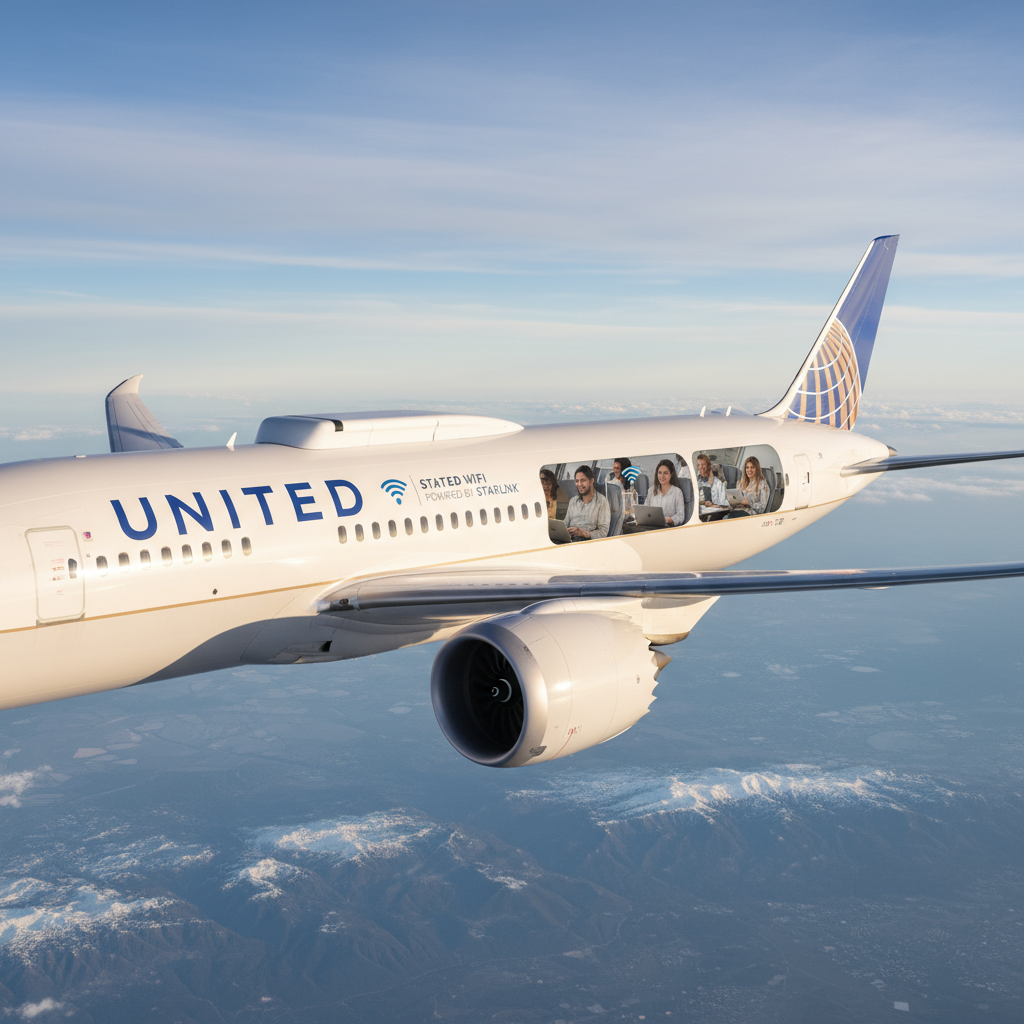Physical Address
304 North Cardinal St.
Dorchester Center, MA 02124
Physical Address
304 North Cardinal St.
Dorchester Center, MA 02124
Global aviation news tracker
Global aviation news tracker

United Airlines has cleared the FAA to install Starlink onboard its mainline fleet.
On September 29, 2025, United Airlines announced Federal Aviation Administration (FAA) certification for Starlink satellite internet across its mainline aircraft — the first time a major U.S. carrier has gained approval to offer Starlink’s high-speed, low-latency broadband on domestic and international mainline services. The certification allows United to begin passenger-facing rollouts and to scale installations into Q4 2025.
The approval follows months of flight trials and technical evaluations that focused on avionics compatibility, antenna installations and interference mitigation. United says the move aims to deliver streaming-capable Wi‑Fi and faster connections than many current inflight systems, improving entertainment, productivity and onboard communications for passengers on transcontinental and long-haul flights.
Initial installations will target mainline aircraft types that serve long-haul international and high-density domestic routes; United has not specified exact models or a fleet count in this announcement. The carrier plans a staged rollout so crews, operations and maintenance teams can validate performance in service. United also noted the certification is a regulatory milestone that positions it ahead of competitors in the next-generation inflight Wi‑Fi race.
Passengers can expect updates from United about when specific routes and aircraft will receive Starlink. Details on pricing, free-tier access (if any), or loyalty program perks tied to the service were not included in the FAA certification announcement and will likely follow as installations proceed.
For the industry, the FAA sign-off for a major U.S. carrier could accelerate broader adoption of satellite broadband systems on airliners, prompting rival airlines and suppliers to speed testing and regulatory filings. Travelers who stream, work remotely, or depend on stable internet connections in the air will be the first beneficiaries once the system is live at scale.